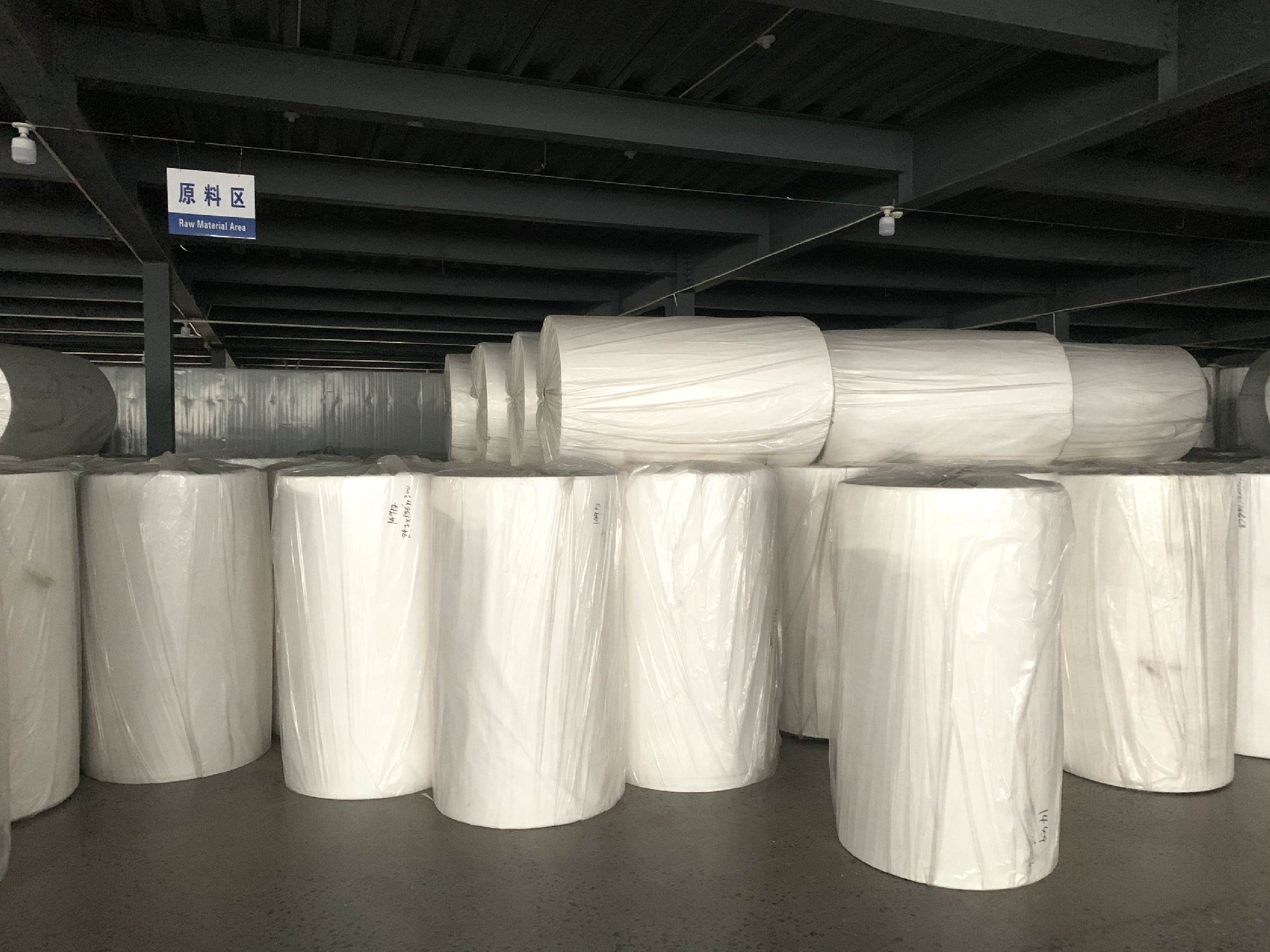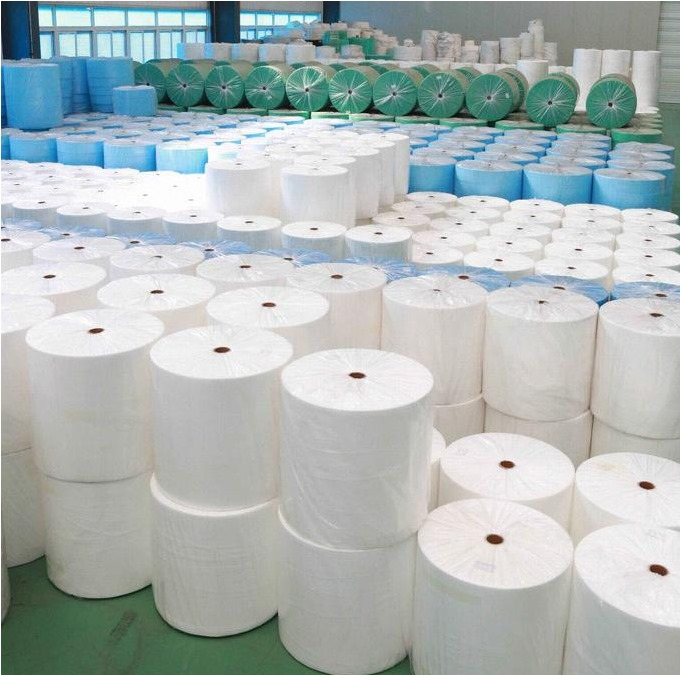
Non-woven fabric (English name: Non Woven), also known as non-woven fabric, refers to non-woven fabric. It is a fabric that does not need to be spun and weaves. It is formed by oriented or random woven short fibers or filaments. The web structure is then reinforced by mechanical, thermal bonding or chemical methods.
Non-woven fabrics are mostly made of polypropylene (pp material) pellets, which are produced by high-temperature melting, spinning, laying, and hot-press coiling in a continuous one-step process. It is called because of the appearance and certain properties of the cloth. cloth.
Non-woven fabric breaks through the traditional textile principle, and has the characteristics of short process flow, fast production rate, high output, low cost, wide use, and multiple sources of raw materials.
The fibers used in the production of non-woven fabrics are mainly polypropylene (PP) and polyester (PET). In addition, there are nylon (PA), viscose fiber, acrylic fiber, polyethylene fiber (HDPE), and chlorine fiber (PVC).
Non-woven fabric is a non-woven fabric that directly uses polymer chips, short fibers or filaments to form fibers through airflow or mechanical netting, and then undergoes spunlacing, needle punching, or hot rolling reinforcement, and finally after finishing to form a non-woven fabric.

Classification of non-woven fabric production process:
Spunlace non-woven: High-pressure fine water jets are sprayed onto one or more layers of fiber webs to entangle the fibers with each other, so that the fiber webs can be reinforced and have a certain strength.
Heat-bonded non-woven: adding fibrous or powdery hot-melt adhesive reinforcement material to the fiber web, and then the fiber web is heated, melted and cooled to reinforce into a cloth.
Airlaid: Also known as dust-free paper, dry-laid paper-making non-woven fabric. It uses air-laid technology to open the wood pulp fiberboard into a single fiber state, and then uses air-flow method to agglomerate the fibers on the web curtain, and then reinforce the fiber web into a cloth.
Wet non-woven: The fiber raw materials placed in the water medium are opened into single fibers, and different fiber raw materials are mixed at the same time to form a fiber suspension slurry, which is transported to the web forming mechanism, and the fibers are formed into a web in a wet state and then reinforced Into cloth.
Spunbond nonwoven: After the polymer has been extruded and stretched to form continuous filaments, the filaments are laid into a web, and the web is then bonded by itself, thermally bonded, chemically bonded or mechanically reinforced to make The web becomes a non-woven fabric.
Meltblown non-woven: polymer feeding-melt extrusion-fiber formation-fiber cooling-netting-reinforcement into cloth.
Needle-punched non-woven fabric: A type of dry-laid non-woven fabric. Needle-punched non-woven fabric uses the piercing effect of needles to reinforce the fluffy web into a cloth.
Stitch-bonded nonwoven: It is a kind of dry-laid non-woven fabric. The stitch-bonding method uses a warp-knitted loop structure to bond fiber webs, yarn layers, non-woven materials (such as plastic sheets, plastic thin metal foils, etc.) or their combination The body is reinforced to make a non-woven fabric.
Advantages of non-woven fabrics
Non-woven fabric is a new type of fiber product with soft, breathable and flat structure. The advantage is that it does not produce fiber debris, is strong, durable, and silky soft. It is also a kind of reinforcing material, and it has a cotton feel, which is compared with cotton fabrics. , Non-woven bags are easy to shape and cheap to make.
It is a new generation of environmentally friendly materials with the characteristics of water repellency, breathability, flexibility, non-combustibility, non-toxic and non-irritating, and rich colors. If the material is placed outdoors and decomposed naturally, its longest life span is only 90 days. It will decompose within 8 years when placed indoors. It is non-toxic, odorless, and has no leftover substances when burned, so it does not pollute the environment, so environmental protection comes from this .
In terms of environmental protection, the raw material of most of the non-woven fabrics currently used is polypropylene, while the raw material of plastic bags is polyethylene. Although the names of the two substances are similar, their chemical structures are far apart.
The chemical molecular structure of polyethylene is very stable and extremely difficult to decompose, so it takes 300 years for plastic bags to be decomposed; while the chemical structure of polypropylene is not strong, the molecular chain can easily be broken, which can be effectively degraded , And enter the next environmental cycle in a non-toxic form, a non-woven shopping bag can be completely decomposed within 90 days. Moreover, the non-woven shopping bag can be reused more than 10 times, and the pollution degree to the environment after disposal is only 10% of the plastic bag.
Disadvantages of non-woven fabrics
The disadvantage of non-woven fabrics is that they are poor in strength and durability, and cannot be cleaned like other fabrics. Because the fibers are arranged in a certain direction, they are easy to split from the right-angle direction, and so on.
Non-woven fabric use
Medical surgical gowns, protective clothing, disinfection wraps, masks, diapers, civilian wipes, wiping cloths, wet face towels, magic towels, soft towel rolls, beauty products, sanitary napkins, sanitary pads, and disposable sanitary cloths, etc.
Home decoration wall coverings, table cloths, bed sheets, bedspreads, etc., clothing linings, adhesive linings, wadding, shaped cotton, various synthetic leather base fabrics, etc.
<< previous
next >>